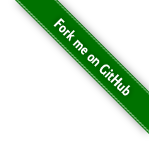A free lifestream platform and social activity reader
gLifestream is a free lifestream platform and social activity reader. It is licensed under the GNU General Public License (GPL), version 3. It's open source.
gLifestream joins several external and/or internal streams into a single one. External streams may be represented by RSS/Atom channels or popular services such as Twitter or Facebook. The user decides which of them are publicly visible and which are not. Public streams are visible for anybody. The rest of streams are visible only for logged in users.
The gLifestream software requires an HTTP server capable of running Django applications and a database supported by it. Data from the configured streams are automatically pulled from the remote services associated with them and stored in the database. This mode of operation ensures the user that his data (messages, links, photos, etc.) will remain intact even if the external service they came from ceases to exist.
You can view demo at wojciechpolak.org/stream (but limited only to the "public" view). This demo is the author's stream with a custom theme.
Features
- Free, self-hosted web application
- Automatic imports of external streams
- Public and Private views
- User views: Favorite entries, Archives, Custom stream lists
- Automatic expansion of shortened URLs
(?)
URL shortening is a special technique whereby a provider makes a web page available under a very short URL. This technique became widely used with the advent of microblogs and similar web services which limit the size of postings. For example, Twitter does not accept postings longer than 140 characters. This often makes it impossible to put a URL and some useful description in a single posting, so users wishing to share some interesting links with others have to use external services that help them shorten the URLs.
This technique, however, introduces many potential problems. First of all, when a URL shortening server stops working, the link becomes unusable (a so called linkrot). Secondly, a shortened URL obscures the target address and may lead to unexpected or even malicious site.
To prevent this from happening, gLifestream automatically expands the shortened URLs and stores them in their full form.
Expanding: tinyurl.com, bit.ly, goo.gl, t.co, url4.eu, is.gd, ur1.ca, 2tu.us, ff.im, post.ly, awe.sm, lnk.ms, pic.gd, tl.gd, tiny.cc, ow.ly, j.mp, youtu.be.
- Embedded multimedia views
(?)
Links to multimedia resources (like YouTube, etc) are automatically embedded in your stream. This allows the reader to play the resource without leaving the stream site he is visiting.
gLifestream currently supports the following services: video (YouTube, Vimeo, Dailymotion), images (Instagram), audio, maps (OSM, Google Maps).
- Out of the box output formats: HTML5, Atom, JSON
- Search functionality
- Friends-only entries
- WebSub support (publisher and subscriber)
(?)
WebSub is an open protocol for distributed publish/subscribe communication on the Internet. It provides near-instant notifications of change updates.
- OAuth support
- Write posts by web or e-mail (including media attachments)
- Keyboard shortcuts for navigation
- Customizable themes
(?)
Unique gLifestream design allows you to easily change its appearance by supplying a CSS file – a "theme". You need only a pair of mouse clicks to switch between various themes.
- Bookmarklet for easy webpage sharing
- Localization
(?)
Readers of your stream see application messages in their preferred language, if there exists a corresponding translation. Currently, English and Polish versions are available.
Supported services (out of the box)
Any RSS/Atom feed, Mastodon, Flickr, Twitter, Vimeo, YouTube.
Any service not listed above can be added as an RSS/Atom stream (if it provides such feeds) or by extending gLifestream and writing custom APIs support.
Download
Pull the code from the Git
repository. Clone the repository using this command:
git clone https://github.com/wojciechpolak/glifestream.git
or from the mirror:
git clone git://git.gnu.org.ua/glifestream.git

Frequently asked questions
- Name Pronunciation
- At your liking. There are two ways:
- g-Lifestream, with no vowel between the `g' and the `l'.
- gee-Lifestream, with `gee' being pronounced as the name of the letter `G'.
- Spelling
- The full project name is spelled "gLifestream", with lower case `g' and upper case `L'. The name can also be abbreviated to GLS, all upper case.
